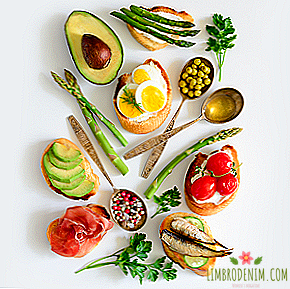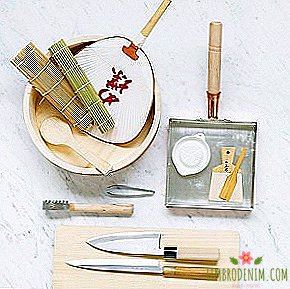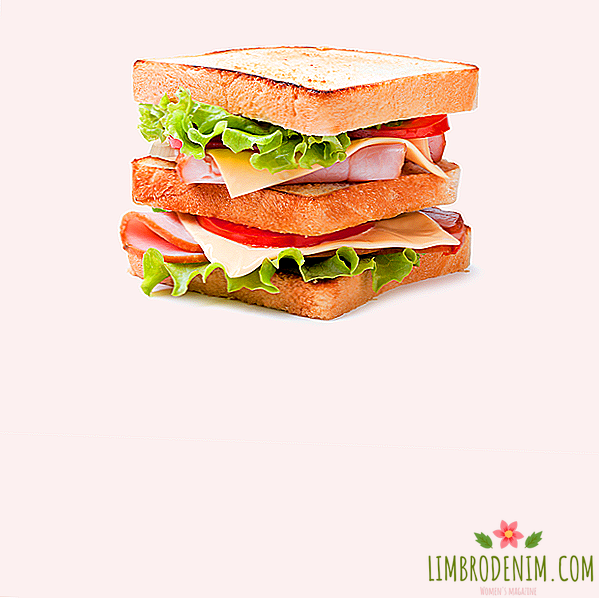Steak yogurt: why women and men are fed differently
Gender targeting of consumer goods exists in any field: in self-care, sports and even food. Commercials in which girls eat a bloody steak or eat sausages with beer are a rare and often ironic phenomenon. In the restaurant, men are more likely to be offered meat and roast, and women are offered light and vegetable "salad", "fish" and "soup". Marketers, manufacturers and even restaurateurs have long understood that turning to a male or female element helps to shape the boundaries of a potential target audience and contribute to the formation of new eating habits. We tried to figure out what role gender plays in food culture, how it affects everyday life, and whether there is any point in dividing food into male and female.

From birth, social attitudes are imparted to children, some of which eventually transform into sex-role stereotypes. Stamps attributed to a person, depending on his gender, deeply affect the mind throughout life. Stereotypes exist in food, becoming a means of self-identification. In any dispute about gender inequality, there are always arguments about the biological differences between men and women - as if some, indeed, from Mars, and others - from Venus. This concept translates, for example, the book "Advertising image. Man and woman." In it, the author Alina Dudareva, positioning herself as an advertising expert, argues that from a medical point of view, the predisposition of the sexes to eat differently does exist. Thus, the blood volume in the body in men is 5-6 liters, in women - 4-4.5 liters. The fat content in the tissues of the body in men averages 12% by weight, and in women it is 26%. Every day, men need 700 more calories because their metabolism is faster and their body temperature is usually higher.
By the early 1980s, the number of women in social production increased to 57% (versus 20% in the 1950s). They began to occupy more positions in the public sphere, gradually turning into an independent segment of consumers. A new target audience has come under the gun to marketing and "gender nutrition" - an idea of the role of food, built around sex-role stereotypes - has received a new round of development.
From an early age, under the pressure of society, many girls are anxious about their appearance, feel guilty about what they eat, are not satisfied with the condition of the figure. As a result, women form a more emotional relationship with food. They are upset by jokes about diets, hunger, and busting with calories, while men have a healthy appetite approvingly. Women were told that they should not overeat, and those who find it difficult to cope with the desire to eat after 18 hours are offered to go to a "safe" restaurant.

How media and advertising form stereotypes
Television uses food stereotypes in the concepts of new programs. The channel “Kitchen TV” announces the beginning of the show “Male food” like this: “Have you already heard about the new culinary phenomenon“ Male food ”? Simple, bright, fast and incredibly tasty! It certainly differs from the female one as the male and female logic ... " The stereotype about gender nutrition is supported by both foreign media and domestic ones (in short: in order to appear as a “real girl”, you will have to give up everything that can get stuck in your teeth, stain your mouth, or badly get rid of). “There is plenty of - a man’s prerogative, girls need three leaves and a piece of cheese,” the Allure Russian editor-in-chief believes. In his opinion, a woman at the New Year’s table eating a pie of meat does not excite a man’s fantasy. Green salad - feminine, everything else - moveton. The conclusion suggests this: if you want to have sex - do not eat with a man.
Gender is a key factor in differentiating consumers of food products, since advertising is shown not to people in general, but to men or women. In addition to the main goal - to introduce the product - food advertising inspires certain sex-role stereotypes. So, we are not just offered new ice cream, cookies or mayonnaise, but they show who exactly should eat them. Sweets, for example, represent a separate category of "female" advertising: marshmallow, candy, marmalade, ice cream - these are products that make women cheerful and make them forget about depression. Without chocolate, a party of teachers and professors is inconceivable, and the best gift would be candies with coconut flakes. “I behaved myself well, I deserved it,” the woman justifies in front of the open refrigerator, whose hand reaches for the cheesecake, “she still does not know that any cake can be replaced with a curd. Advertising sells women cupcake, which will not go to the other and become a sweet half, but the dumplings is positioned as food for the family man.
In a food advertisement, men are usually depicted in motion, they are active, energetic, and witty. And if something goes wrong with them, it means they are hungry. For example, men play “like girls” without additional charge of energy in sports, but Snickers is able to return lost male power. Women, on the contrary, dance or sit - it is more convenient to observe the progress of their children, and you can never move with a protein bar, because the stomach becomes flat even during sleep.
The female figure, unlike the male one, is depicted mostly entirely in tight clothing (or without it). Here is a woman sunbathing on the balcony shy of her naked body, allegedly not ready for the bikini season. But after two weeks on cereal, she is finally “ready,” and a close-up smirk of a neighbor gives a hint of a continuation of the story. In addition, women and men in advertising have different motivations. The second is driven by the physiological need for food - hunger (not surprising, after thousands of nesting boxes). Therefore, they choose nutritious foods: dumplings, mashed potatoes, sausages, soups. And even to the cooking process, they are, like real hunters who have just filled up a mammoth.
Women in the commercials mostly choose products or cook for the family, but they rarely eat and rarely, mostly they drink. The caring chicken bought in the shop selflessly gives the family. During the working day they dream to go home early and cook dinner for the household. And many mothers are so busy that they completely forget to have breakfast (but it’s good that there is a husband and children who, at the height of the working day, can bring fermented milk "Miracle" in 300 ml and feed the hungry mother).
And for some reason, girls constantly open their mouths. The reasons may be many. Someone under the impression that "I experienced my first one today." Someone is so surprised by the miraculous power of milk. And someone is burned with a hot salad tongue (with all due respect to Kim). Obviously, sex, seduction and pleasure are not always the hidden motives of many advertising campaigns. So, the restaurant Carl's Jr. invites men to go for everything natural, demonstrating the alluring roundness of organic champignons. They breastfeed men.
Advertising sells not real, but the desired image. Therefore, curds, which are positioned as the ideal food for a slimming person, are “already sold” by slender girls, in order to show what body everyone is supposed to strive for. Men eat big sausages, demonstrating the ability to cope with any difficulties. Attempts to change the situation and instill more free thinking in the food actually lean on and feed all the same gender stereotypes - for example, under the Immune brand they launched yoghurt with “special male design, specially developed tastes and a big bottle,” which, in essence, , the same absurdity as the "male" cotton buds.

How restaurants push for certain foods
Stereotypes about male and female food flourish in the catering industry. According to an article in The Wall Street Journal, during a meal on a first date, along with colleagues or friends, when choosing food, people are even more guided by gender attitudes because they want to give the impression of the best representative of their gender.
Women's concern about the nutritional value of products and men's desire for a hearty meal are reflected in the restaurants menu. "Women tend to order lighter dishes - vegetables, fish. Less often you can see a woman ordering pizza. Surprisingly, in terms of my desserts, I don’t see much of a difference. Women order them as often as men. Sometimes more often Perhaps this is due to the fact that many people come to the cafe after watching the exhibition to drink coffee and eat cake, ”says Denis Kalmysh, the chef of the Garage museum cafe. “Men prefer nourishing dishes, and women prefer refined ones. Salads are among women’s favorites. Women are also more curious and choose new dishes, while men are more conservative and prefer the already familiar taste,” says Veronika Mikhalova, owner of the Peperoni restaurant.
"As a rule, girls read the composition, they are more picky. Their choice is shifted to the salad-soup-snack group, in 80% of cases they take desserts without cream and in 60% with fruit or berries. Almost 90% of women drink plain water without gas, freshly squeezed citrus juices, fruit drinks. From hot dishes they prefer fish, poultry, seafood, vegetables, meat. They rarely take garnishes from cereals and potatoes. Men are conservatives. They rarely try new dishes. They are often divided into those who came to eat. either quickly or thoroughly. The choice of a man is salad and hot or soup and g . Ryachee Desserts choose rarely Women prefer Mediterranean, Italian, Japanese, and men -. American, Mexican, post-Soviet, "- says the owner of the network cafe" The noodle "Yaroslav Gusakov. These preferences are confirmed by the statistics of the Food Club food order aggregator: “According to data for January-July 2015, men order home meals more often. The most popular dishes among clients are Philadelphia roll, California roll and udon with seafood. Men prefer serious dishes such as Meat Feast Pizza, Texas Cheeseburger Pizza and Pork Neck Skewers. "
Alexander Endovin, manager of the Belgian beer "0.33", does not agree with the division of food into male and female. “We have a significant proportion of visitors: 38 kinds of fruit beer contribute. Beer cuisine is traditionally associated with bellies and dozens of calories. It would be wrong to say that only men order a beer plate, Belgian potatoes and pork ribs, and the young ladies watching themselves are green. salad, baked salmon with chicory and tartar with arugula. We would divide the dishes not into male and female, but into more and less high-calorie ones. " However, despite the attempts to please the female audience in the menu, the entertainment content on the social networks of the pub is obviously intended for men.

What it led to and what to do
It turns out that gender stereotypes have a strong influence on the nutrition culture of a modern person. A man is a hunter, a breadwinner, a conqueror, therefore he is created for rich, high-calorie foods and is always responsible for barbecues. A woman is concerned about her appearance and figure on the scales, so she is fed vegetables and low-fat yogurt. Advertising uses stereotypes and itself contributes to their consolidation.
One gets the feeling that people eat in order to demonstrate their status to others (“I am a vegan”, “I am a supporter of a healthy lifestyle,” “I am a patriot, therefore I prefer Russian cuisine”), and forget that, above all, food is needed to restore energy and essential nutrients. Restaurateurs adjust the menu according to gender preferences, and marketers decide what to eat to modern people. Do you want to convey feelings? Give "Raffaello". Charge brains? Take the bar. Lose weight? Drink kefir.
Like any cliches, stereotypes in food create a distorted picture of reality, which is believed when there is no opportunity to independently analyze what is happening and to oppose public opinion. Fear of ordering what you really want in a restaurant and making a choice in favor of what people around you expect is strange and at the same time quite understandable. Excessive consumption of fatty foods is not beneficial to men, who often die from cardiovascular diseases. And the passion for sweets can contribute to the development of obesity and type 2 diabetes, which women concerned about health do not want at all. Therefore, the best way to make friends with food is not to be led by the outside world, but to listen to your own body.
Photo: 1, 2, 3, 4, 5 via Shutterstock





